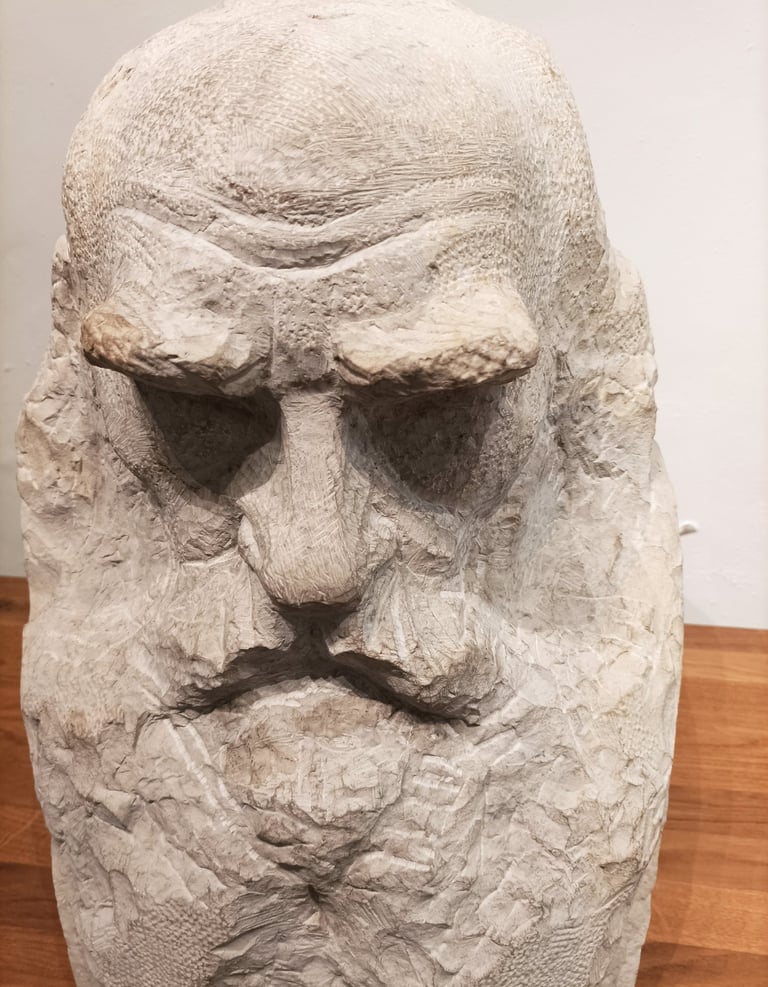
Friendly rocks and towering cliffs
The landscape that surrounds our home.
FLORA AND FAUNA AND THE FOREST WORLD
Joan
7/20/20234 min read
From the very first moment that we saw our new home, we both fell in love with this rocky landscape. In whatever direction we look there are rock formations, be it the steep escarpments of The Cirque du Bout du Monde on the other side of the valley or the smaller rocky outcrops that surround our house. B. explained to me afterwards that it had immediately reminded him of The Matobos hills (or kopjes) in his native Zimbabwe. For me this isolated spot evoked memories of a secret childhood bicycle ride to Cragside in Northumberland where I saw a similar if less significant rocky landscape. As they say in France we were both struck by a 'coup de foudre' and separately decided that this was to be our first home in France .
These rocks bear an almost mystical quality and continue to make this place feel very special. Unlike we humans, they are constant. They not only speak of ages past, but also of times to come, when, who knows, the world may be a very different place.

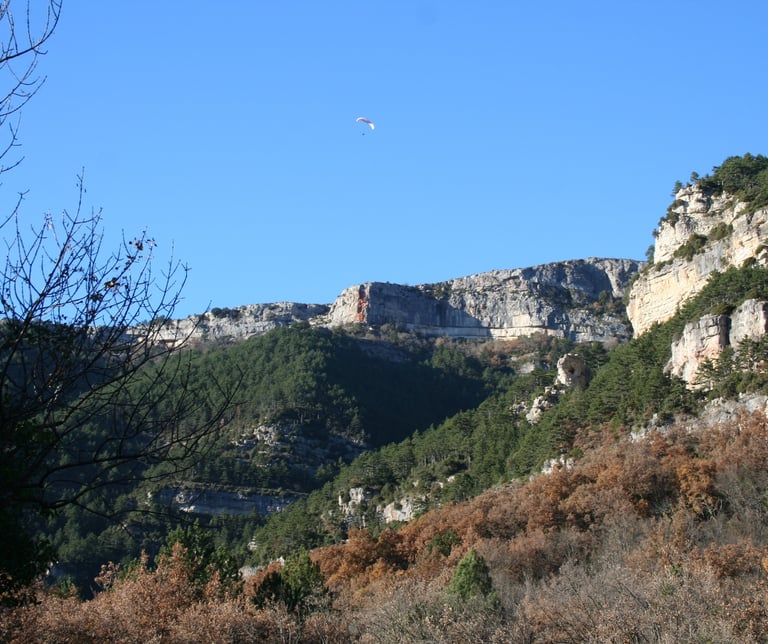
The"Cirque du Bout du Monde" was formed from a meander in a small stream that cut deeply into the Larzac plateau , leaving the monumental chalk cliffs that tower before us today.
A walk up into the forest above our house reveals more cliffs which run along the other side of the valley. Puech Haut is the highest point from which one can look out over the Mediterranean plain and the mountains of the Massif Central. But this is an unstable zone, and parts of it are still liable to earth movements and rock slides. It is monitored closely. Fortunately the land around our house is considered to be stable. Over the millenia parts of the cliff have separated, and great boulders have become dislodged, leaving behind fascinating features that have become very familiar to us.
Some large features have official names like ' Le Roc d'Eglise,' which is indeed as monumental as any church.
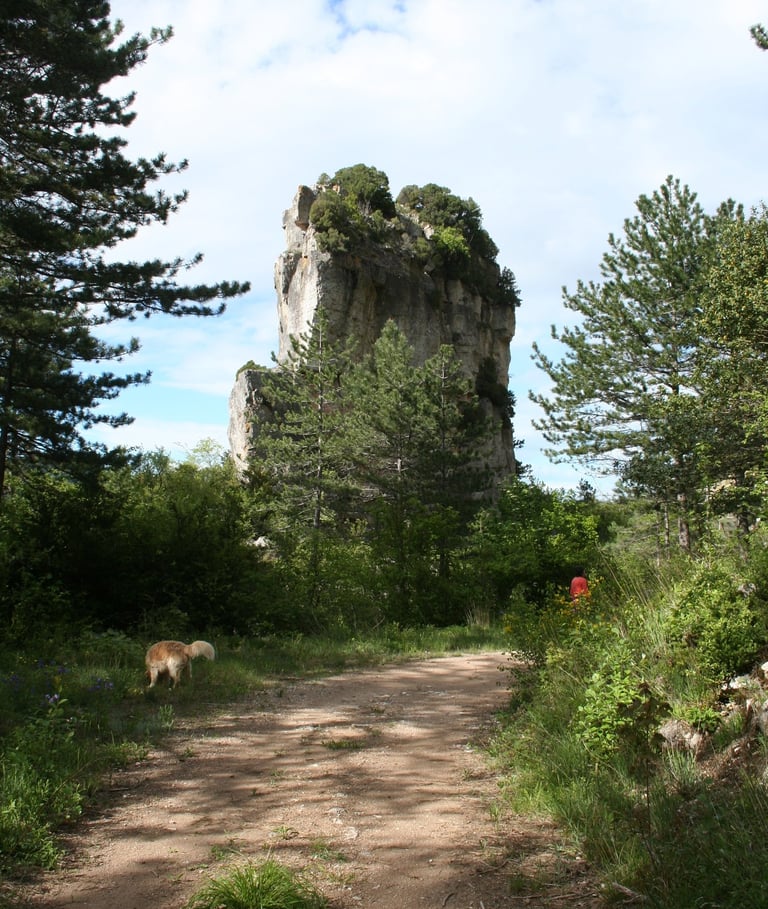

Other rocks have significant features. We have named this gigantic rock 'The Sphinx.' Perhaps you can see why.

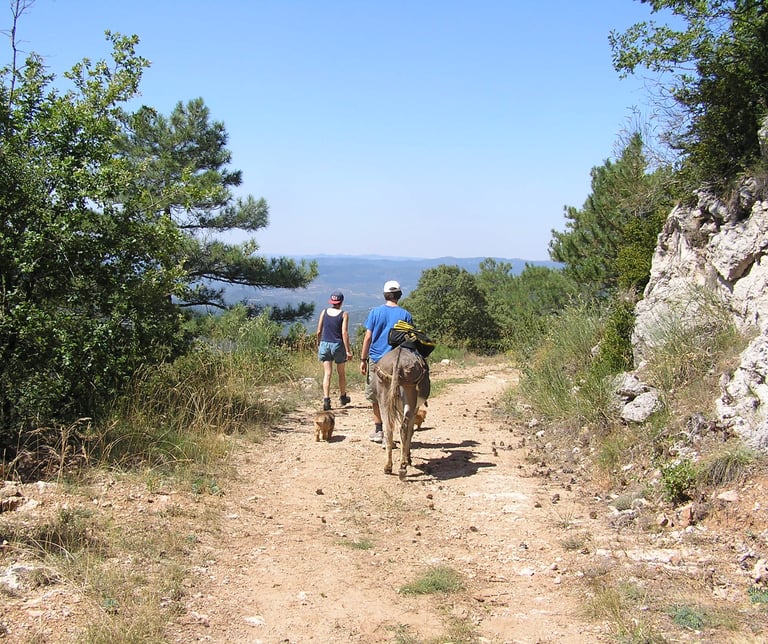
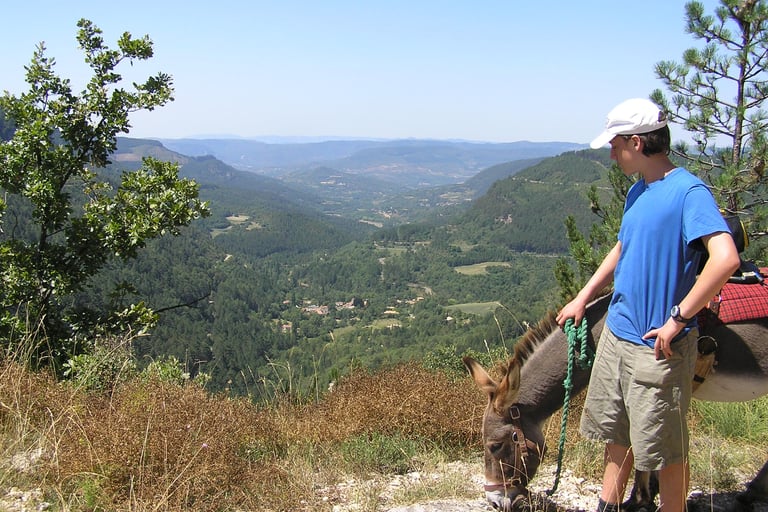

Why not hire a donkey as our friends did , to walk this magnificent rocky landscape with you, and enjoy vistas over much of Southern France. (Sherp Âne, La Vacquerie St Martin. )


This rock is relatively small. We pass it on our walk to Aubaygues , and I have named it 'The Whale.'
Just beyond 'The Whale' stands a much larger rock. It has a commanding position in the middle of M. R.'s field, and it would seem to have tumbled down from the mountainside above. It now rests alongside grazing horses, like a giant 'perched block.' I just hope that no pre historic being was in its path when it fell.
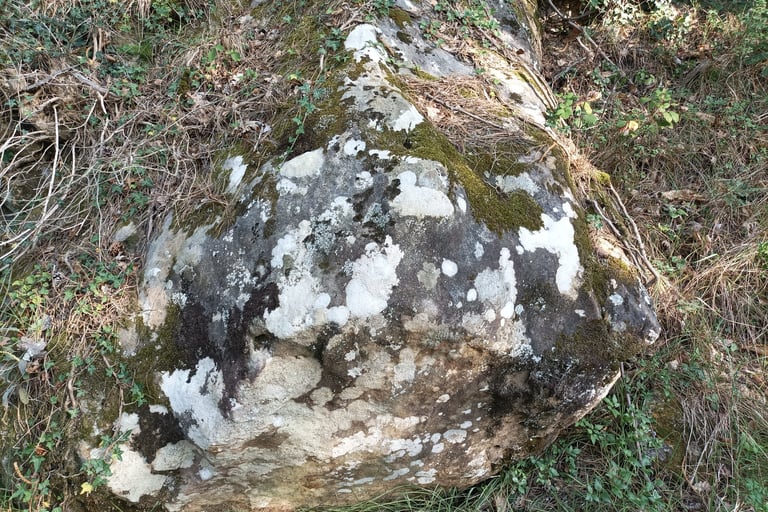


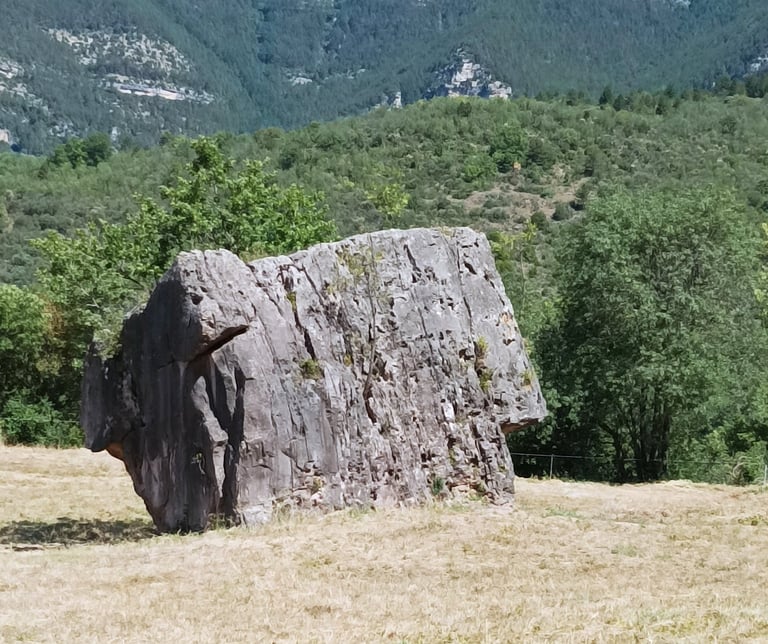
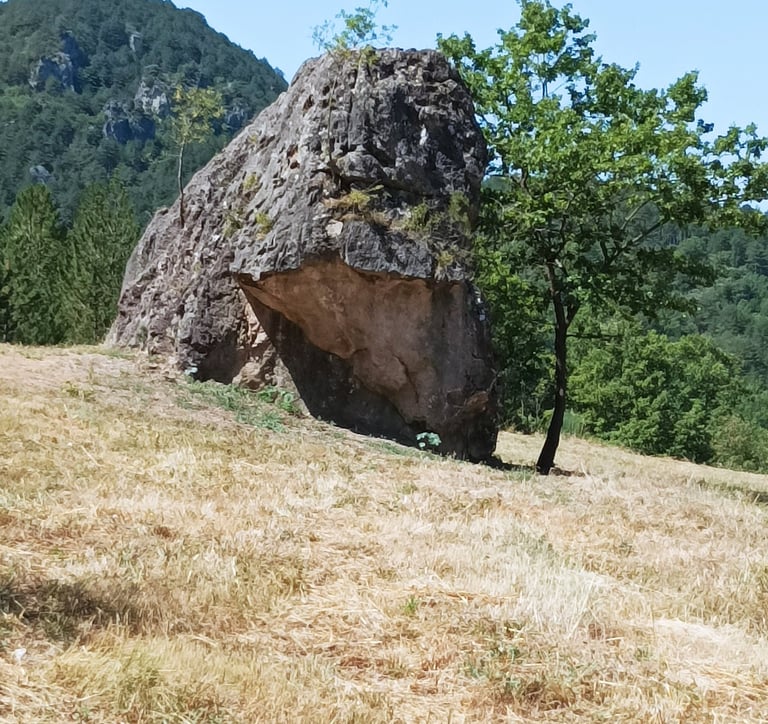

But the first rock that caught our attention was in our very own garden . It lies just above our house, and that is why we named our gite 'Les Rochers.' A juniper bush has grown from the summit for as long as we can remember, and tucked away behind it someone has created a little peaceful corner of the garden. This is the coolest place to sit in the height of summer.

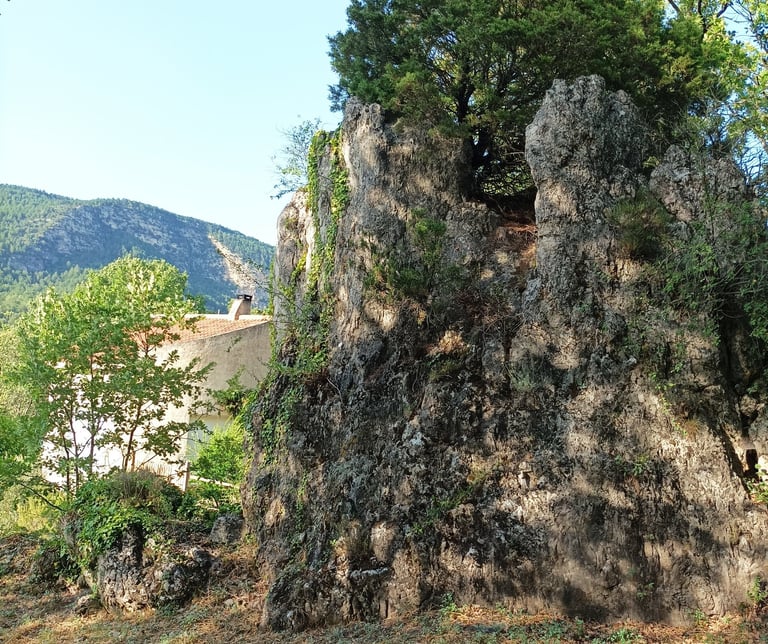

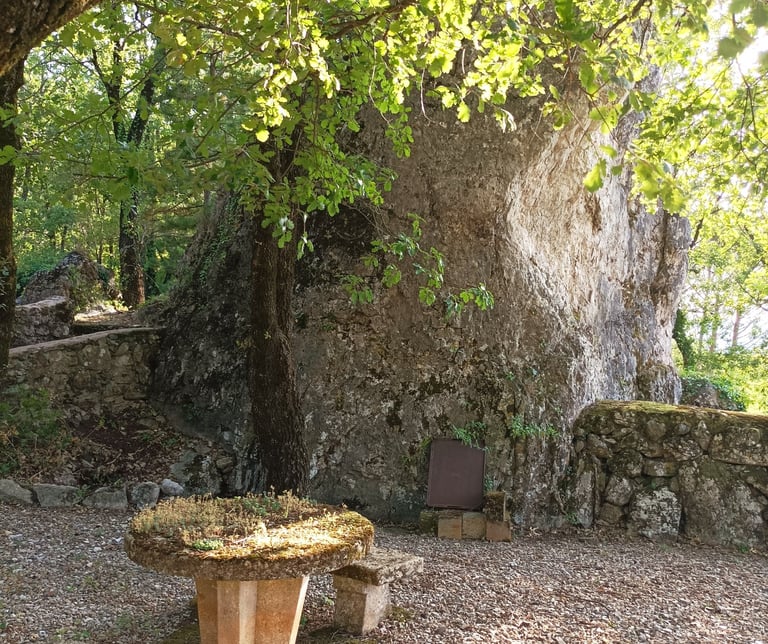
There are other rocks and small cliffs too in different parts of the garden. How I wish our boys could have grown up exploring this fascinating environment with its hidden corners and tiny caves.
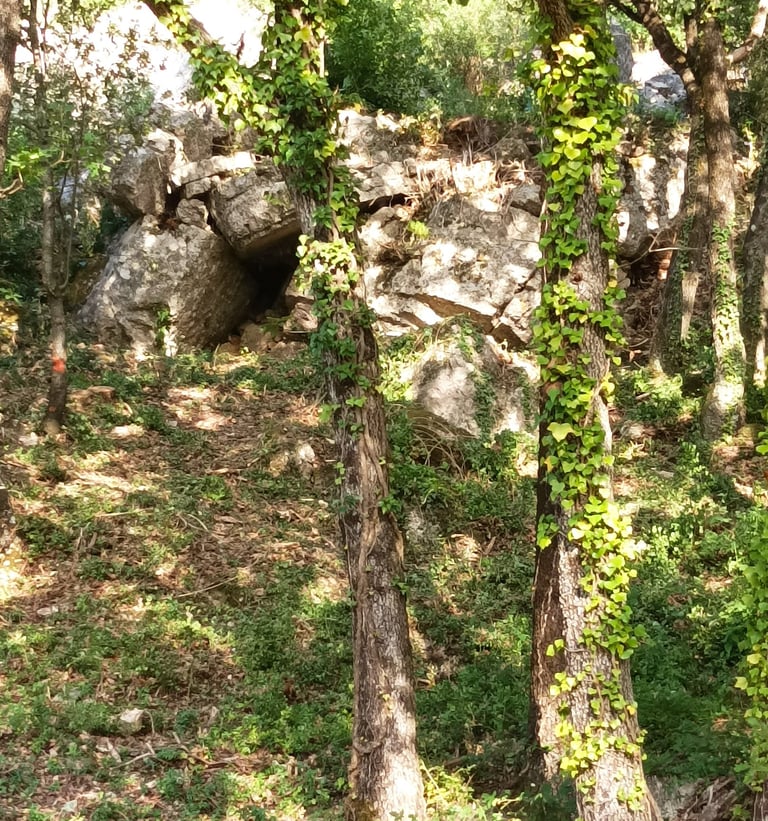

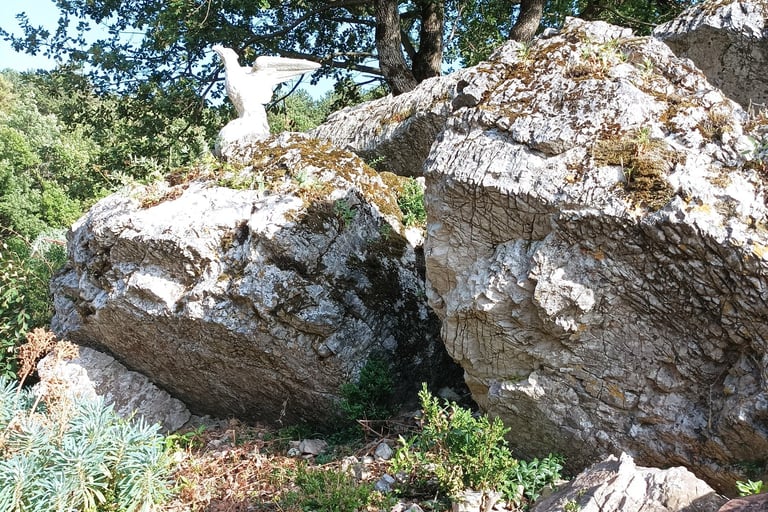

Amongst the many people who loved this dry rocky environment was a sculptor by the name of Paul Dardé, who was born close to here. He loved to work the local stone. After a successful career in Paris, but where he accumulated debt, he returned home. His work is the current focus of the summer exhibition at The Musée Fleury at Lodève , and I shall feature him in one of my next blogs.
